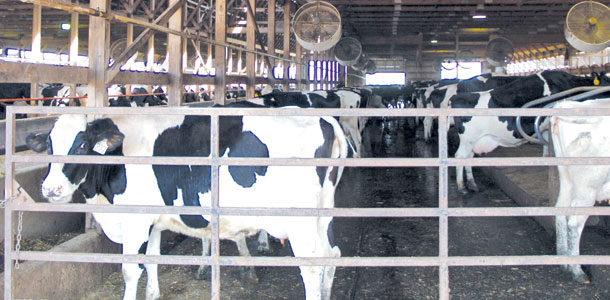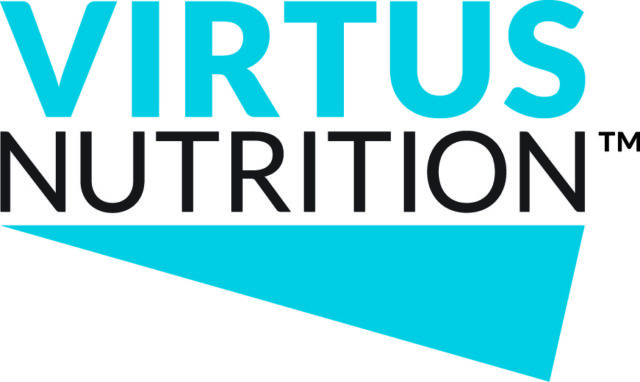Herd health is the result of multiple, interconnected factors. Nutrition, herd health protocols and vaccination programs often come to mind when looking for ways to improve health through all stages of an animal’s life cycle. While all are proven to make a difference, one often overlooked yet essential area of focus is your facilities.
Facilities and health may seem like an unlikely pair, but how you manage an animal’s surroundings can have a huge impact on health and performance.
For example, if cows are uncomfortable in the freestalls provided, they will spend more time on their feet. Additional stress to hoof health can cause discomfort and, if not corrected in a timely fashion, can result in decreased dry matter intake, milk production and reproductive performance.
To better understand the role your facilities play in herd health, here are simple yet effective methods to fully assess your dairy’s housing environment and ensure your animals are healthy for maximized performance. In addition, enhancing your facilities also increases the effectiveness of your management protocols, vaccination programs and job satisfaction – for you and your employees.
Taking an assessment
The best way to determine how well your facilities deliver what your animals need is through a third-party assessment. You see your barn, pens and animals every day, making it difficult to identify areas – both large and small – to target for improvement. Bring in an outside expert to visit your dairy and address three key areas of facility effectiveness: cow flow and comfort, cleanliness and air movement.
The audit should detail where progress can be made. While facilities can be hard to modify, there are usually options to maximize the facilities you have for optimal animal health. Assessments often identify areas to improve that may have been overlooked or deemed as “OK” but could use a change.
Moving with the herd
The best way to fully understand how comfortable your cows are is to spend a few hours with the herd. Go through their daily routine and actively watch animals as they travel to the milking parlor, eat at the bunk, rest in the stalls and interact with herdmates.
You can quickly get a sense of places where bottlenecks exist and improvements can be made when you take the time to do this. For example, if cows will only lay in certain stalls or wait in line to only walk a certain lane to get to the milking parlor, often you can make small changes to quickly improve comfort.
Keep air flowing
Stagnant air and insufficient air flow can have detrimental impacts on the respiratory health of your herd. This makes ventilation and air flow critical, regardless of weather or external conditions. Minimize the chances for respiratory disease by regularly exchanging warm, humid barn air for drier, cooler outside air, so animals are breathing clean, fresh air.
Fans are the most common method used to increase air flow. Ensure that fans are adequately sized and are in good working order by replacing worn belts and fan blades and cleaning protective screens regularly.
Clean is still king
Nothing has an effect on health like cleanliness. Regardless of the age and wear of your facilities, keeping it dry and clean can be accomplished by all dairies. Focus on areas that are commonly wet – like bedding in stalls, around waterers and under misters during hot summer days – as extra moisture can facilitate the rapid growth of bacterial pathogens.
Misters are often added with fans when heat stress conditions arise, but care must be taken to position misters properly. Wet concrete or bedding can increase the risk of lameness and mastitis. Avoid placing misters over the feedbunk area to reduce mold and feed palatability issues, as well as improve facility cleanliness.
Minimizing the bacteria in contact with the cow – through manure and water – can also minimize the bacteria that come in contact with teat ends and can result in mastitis.
Other tips for top performance
Many other areas impact how your herd responds to their environment. Keep these tips in mind as you look for opportunities to improve the cow’s day-to-day interaction with their surroundings:
- Minimize heat stress. Cows begin experiencing heat stress at temperatures as low as 72ºF or at a temperature-humidity index of 68.1. These temperatures can easily be reached inside barns, especially as temperatures rise in the summer. Use the newest technologies and proven practices to minimize heat stress in your facilities.
- Cut down on flies and birds. Flies can spread diseases quickly, while birds bring a host of problems for dairymen. Not only do birds eat high-protein feed intended for cattle, but bird droppings also spread disease pathogens. Work to minimize the presence of fly and bird populations to keep disease pathogen loads low.
- Look beyond facilities. While facilities are critical, protocols and programs you have in place play a key role in herd health. When the right plan is matched with a clean, comfortable environment, your herd has the chance to thrive. Work with your herd veterinarian to implement a whole-herd vaccination protocol to prevent disease rather than waiting to treat it.
When it comes to managing facilities for disease control, focus on getting the basics right. With appropriate cow movement and air flow coupled with clean, functioning facilities, you can ensure cows are in the right environment for optimal health. PD
Dr. Scholz, a DVM graduate of Purdue University, manages the professional services staff at Novartis Animal Health.
Photo by PD staff.

Douglas Scholz
Director - Veterinary Services
Novartis Animal Health US Inc.






